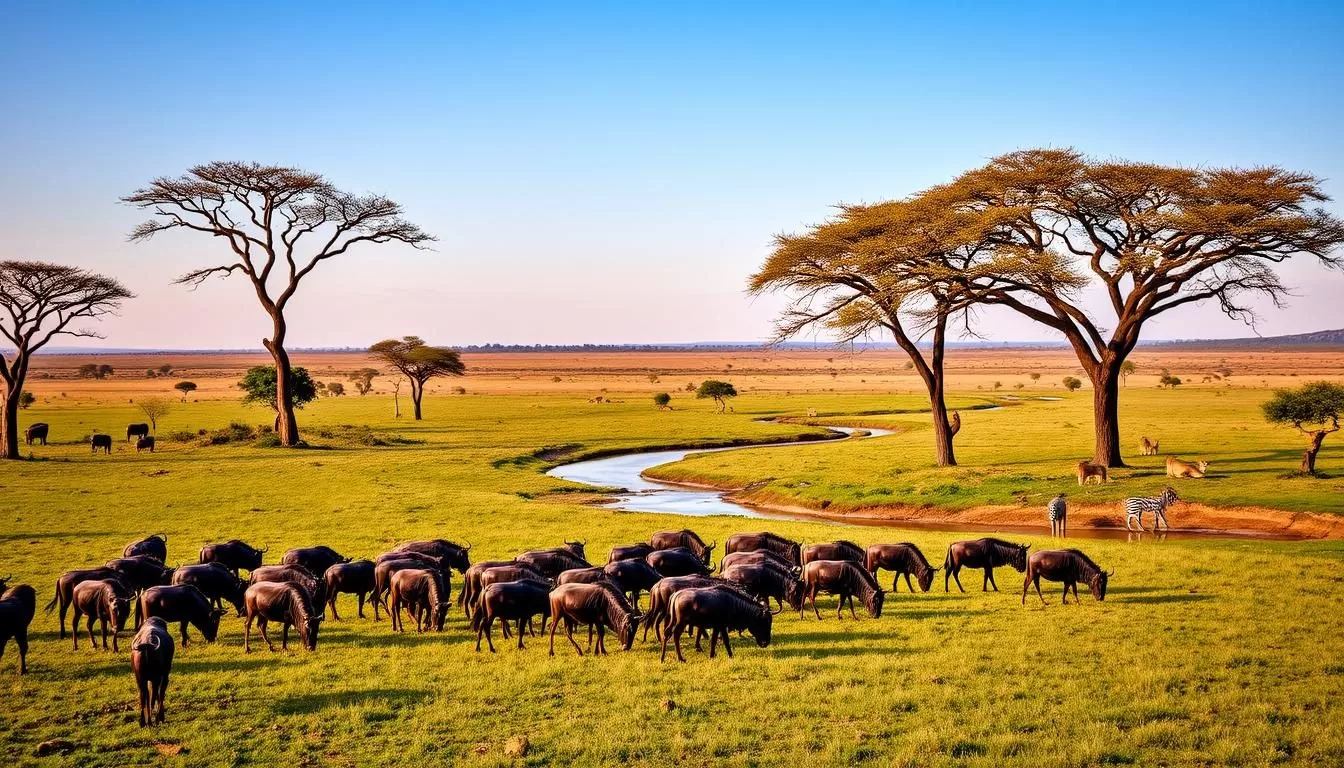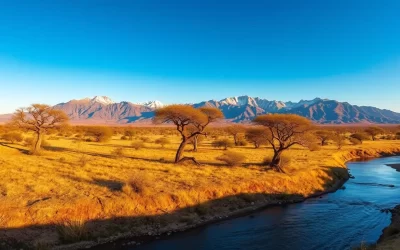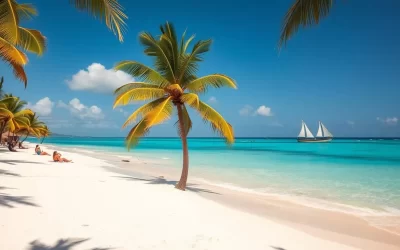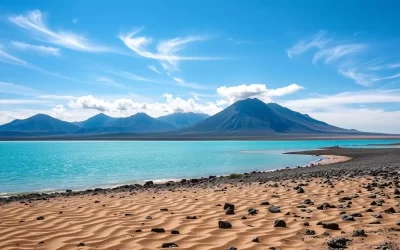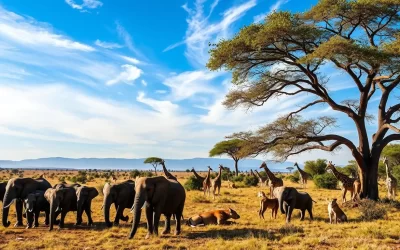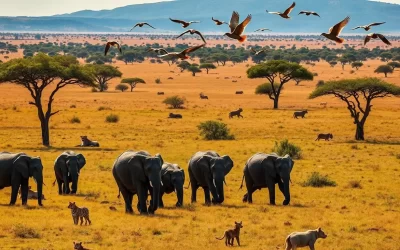✓ Accommodations✓ Flights✓ Rental Cars
Imagine stepping into a wildlife paradise, where the savannah stretches as far as the eye can see, and the wildlife is as abundant as it is diverse. You’re about to embark on an unforgettable safari adventure in one of Africa’s most iconic destinations.
The name ‘Mara‘ originates from the Maa language, meaning ‘spotted,’ which refers to the landscape dotted with acacia trees and craters. As you explore this incredible reserve, you’ll witness the majestic wildlife, including elephants, buffalo, zebras, and the big cats: lions, leophets, and cheetahs.
From July to November, the savannah comes alive with the Great Wildebeest Migration, a spectacle that promises an experience of a lifetime. Get ready to travel through the best of Masai Mara, with insider tips on the top activities and accommodations that will make your trip truly unforgettable.
Discovering the Magic of Masai Mara
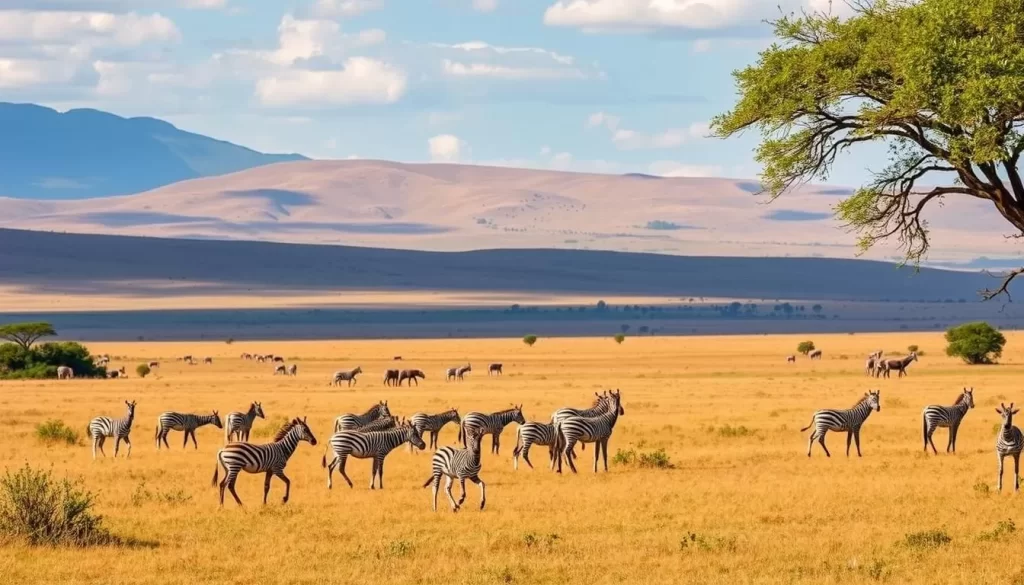
As one of Africa’s most celebrated safari destinations, Masai Mara National Reserve promises an unforgettable adventure. The reserve is known for its exceptional wildlife density, making it a prime location for game viewing and spotting big cats in their natural habitat.
The Jewel of Kenya’s Safari Circuit
The Masai Mara is a relatively small park compared to others like the Serengeti, but it boasts one of the highest concentrations of wildlife anywhere in the world. This density, combined with its open landscapes, provides unparalleled access to viewing opportunities, making it easier to spot animals.
The reserve is home to an abundance of big cats, including multiple lion prides, resident leopards, and cheetah families, often visible in a single game drive.
Why Masai Mara Stands Out Among African Reserves
What sets Masai Mara apart is its remarkably high density of wildlife in a relatively compact area, offering a safari experience like no other. You can explore the reserve through various activities, from traditional game drives to walking safaris and hot air balloon adventures.
- Unparalleled access to viewing opportunities due to open landscapes.
- One of Africa’s highest concentrations of big cats.
- A variety of ways to explore, including game drives, walking safaris, and hot air balloon adventures.
- The chance to see all of the Big Five (lion, leopard, elephant, buffalo, and rhino) in a short stay.
Location and Landscape of the Mara
As you step into the Masai Mara, you’re immediately immersed in a world of rolling grasslands and abundant wildlife. The reserve’s unique geography and diverse ecosystems make it a standout destination for safari enthusiasts.
Where to Find the Masai Mara
The Masai Mara National Reserve is located in the southwestern part of Kenya, bordering Tanzania’s Serengeti National Park. This strategic location makes it a key part of the Great Migration circuit, attracting visitors from around the globe.
The reserve is easily accessible by air, with several charter flights operating from Nairobi’s Wilson Airport to the Masai Mara’s airstrips.
The Iconic Savannah and Its Features
The Masai Mara’s landscape is characterized by vast open plains dotted with iconic acacia trees, creating a picturesque savannah that is teeming with wildlife. The Mara River, a lifeline for the ecosystem, flows through the reserve, supporting a rich variety of flora and fauna.
| Feature | Description | Significance |
|---|---|---|
| Open Plains | Vast grasslands | Ideal for grazing animals and predators |
| Acacia Trees | Iconic umbrella-shaped trees | Characteristic feature of the savannah landscape |
| Mara River | Major waterway | Supports diverse wildlife and ecosystem |
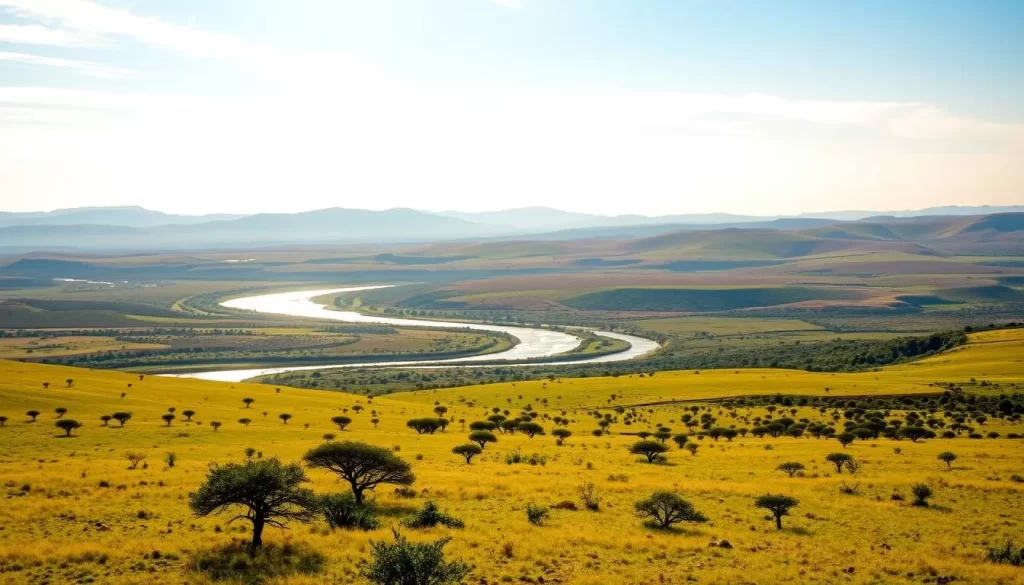
The Great Wildebeest Migration: Nature’s Greatest Show
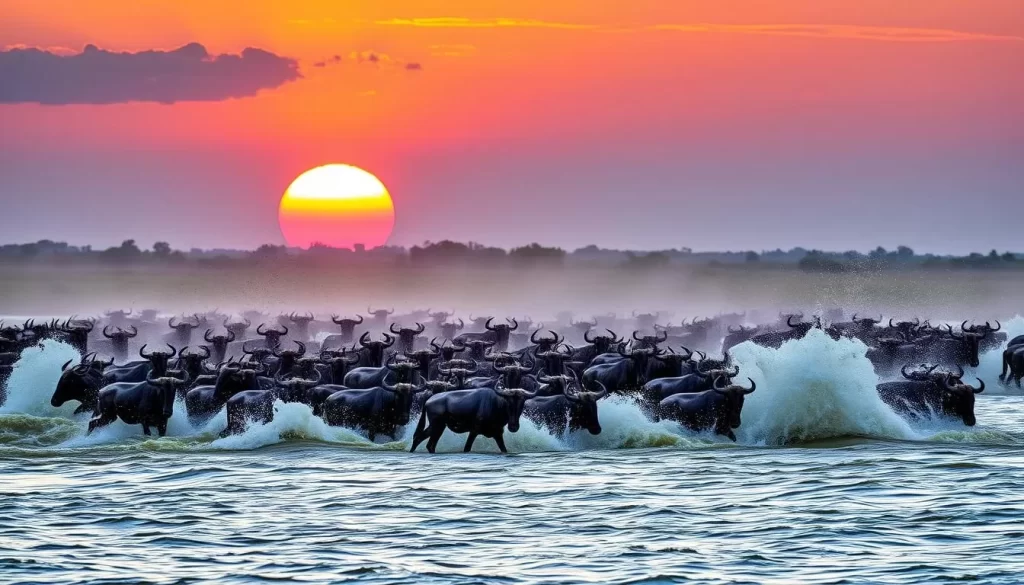
Every year, the Masai Mara hosts one of the most spectacular wildlife events on the planet: the Great Wildebeest Migration. This natural phenomenon involves massive herds of wildebeest, zebras, and gazelles making their way across the Mara River in search of greener pastures.
The migration is a circular journey, with the herds traveling between the Serengeti National Park in Tanzania and the Masai Mara National Reserve in Kenya. The Mara River provides a significant obstacle for the wildebeest herds, and the river crossings are a highlight of the migration.
Understanding the Migration Cycle
The Great Wildebeest Migration is an annual cycle that is influenced by seasonal rainfall and the availability of grazing land. The wildebeest herds move in a clockwise direction, following the rains and the growth of new grass. The migration cycle typically peaks between July and October, with the most dramatic moments occurring at river crossings.
Best Spots to Witness River Crossings
The Mara River is the main location for witnessing the dramatic river crossings. Key crossing points are located between Lookout Hill and Paradise Plain in the Mara Triangle. To witness these events, it’s essential to be on game drives during the peak months of August and September. Additionally, the Talek and Sand Rivers also host smaller but equally dramatic crossings.
- The most dramatic moments occur at river crossings, particularly along the Mara River, where crocodiles and strong currents create perilous obstacles.
- Position yourself near key crossing points along the Mara River for the best viewing experiences.
- River crossings are unpredictable, requiring patience to witness this spectacle.
- Game drives should focus on the northern Serengeti and Mara River area during August and September.
- Smaller crossings also occur at the Talek and Sand Rivers, sometimes continuing into November.
Wildlife Viewing and the Big Five
With its rich biodiversity, the Masai Mara National Reserve is a paradise for wildlife lovers and photographers alike. The reserve is home to an incredible array of animals, including the Big Five, making it a top destination for safari enthusiasts.
Lions, Leopards, and Other Predators
The Masai Mara is famous for its big cats, including lions and leopards. The reserve’s open plains provide an ideal habitat for these predators, offering ample opportunities for observation. Cheetahs, with their high-speed hunting capabilities, are also commonly spotted in the area.
Elephants, Rhinos, and Buffalo
The reserve is home to a diverse population of large herbivores, including elephants, rhinos, and buffalo. These game animals roam freely across the Masai Mara, providing visitors with unforgettable viewing experiences.
Other Notable Wildlife Encounters
Beyond the Big Five, the Masai Mara hosts a wide variety of wildlife, including giraffes, zebras, and numerous bird species. The reserve’s diverse ecosystem supports over 95 species of mammals and amphibians, as well as 570 recorded bird species.
| Animal | Notable Features | Viewing Tips |
|---|---|---|
| Lions | Social prides, majestic manes | Early morning or late afternoon game drives |
| Cheetahs | High-speed hunting, distinctive coats | Open plains, patient observation |
| Elephants | Large herds, intelligent behavior | Watering holes, calm approach |
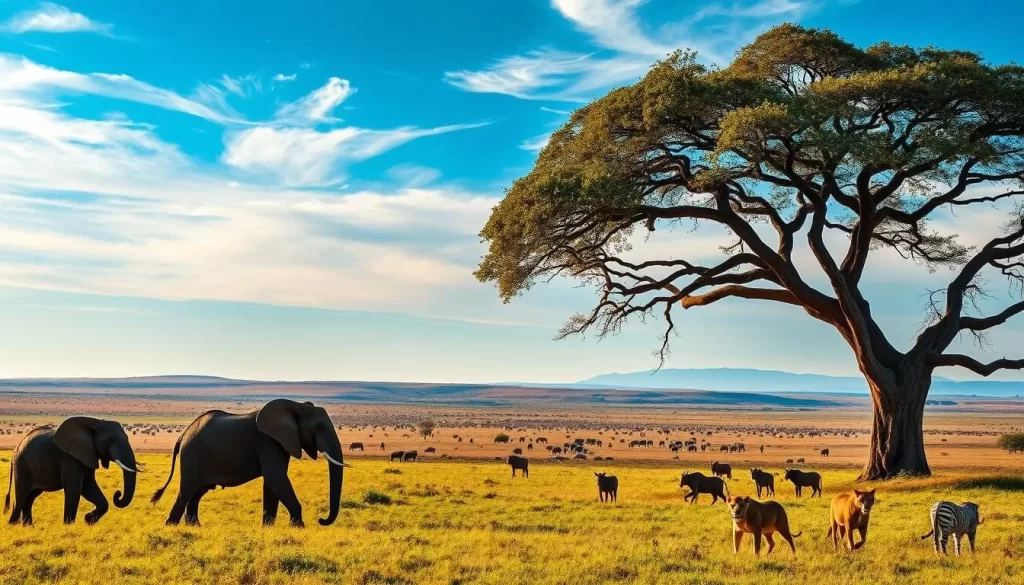
Best Time to Visit Masai Mara National Reserve, Kenya: Best Things to Do – Top Picks
Understanding the seasonal dynamics of Masai Mara is crucial for a memorable safari adventure. The reserve offers unique experiences throughout the year, divided mainly into two seasons: Peak Season and Green Season.
Peak Season (July-October)
The peak season in Masai Mara, from July to October, is characterized by the Great Wildebeest Migration, a spectacle that attracts visitors worldwide. During this time, the reserve is teeming with wildlife, and the chances of witnessing dramatic river crossings are high. Game viewing is exceptional, with the open plains making it easier to spot a variety of animals. However, this period is also the busiest, with higher accommodation rates.
Green Season (November-June)
The Green Season, spanning from November to June, offers a different yet equally rewarding experience. The landscape transforms into a lush paradise after the rains, with vibrant green grasses and wildflowers in bloom. This period is ideal for photography due to the excellent light and dramatic skies. It’s also the calving season for many species, providing opportunities to see newborn animals and increased predator activity. Bird enthusiasts will appreciate the arrival of migratory birds, adding to the reserve’s already impressive bird population. Visiting during the Green Season means fewer tourists and lower accommodation rates, making for a more intimate safari experience.
| Season | Characteristics | Highlights |
|---|---|---|
| Peak Season (July-October) | Busy, higher rates, Great Wildebeest Migration | Exceptional game viewing, dramatic river crossings |
| Green Season (November-June) | Lush landscape, fewer tourists, lower rates | Photography opportunities, calving season, migratory birds |
Safari Activities Beyond Game Drives
Beyond the excitement of game drives, Masai Mara offers a range of other safari activities that provide unique perspectives on the African wilderness. If you’re staying in a private conservancy, you can enjoy a more exclusive safari experience due to the strict limits on the number of vehicles and rooms allowed within their borders.
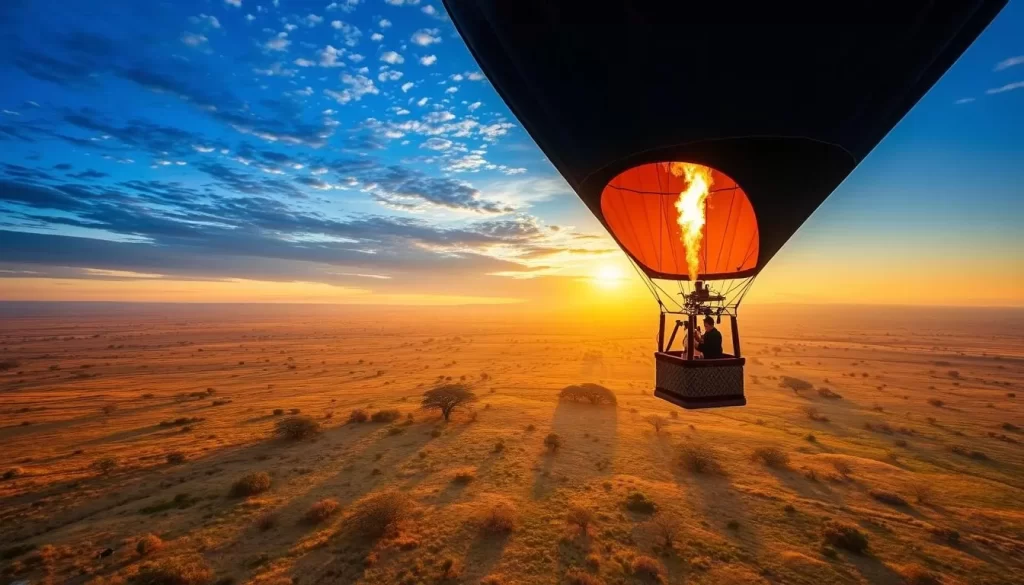
Hot Air Balloon Safaris
Experience the tranquility of a hot air balloon safari, floating gently above the Masai Mara landscape as the sun rises. This serene activity offers a unique perspective on the wildlife and terrain below, with the chance to see animals roaming freely in their natural habitat.
Walking Safaris
For a more immersive experience, consider a guided walking safari. Led by experienced guides, you’ll explore the bush on foot, gaining insight into the smaller details of the ecosystem, from plants and insects to tracks and signs of the larger animals.
Night Game Drives
Night game drives reveal a completely different side of the Masai Mara, allowing you to observe nocturnal species rarely seen during daylight hours. Equipped with special red-filtered spotlights, you’ll witness animals behaving differently after dark, such as lions becoming more active for hunting and leopards on the prowl.
- Night game drives are only permitted in the private conservancies surrounding the main Masai Mara National Reserve.
- You’ll encounter elusive creatures like aardvarks, bush babies, and genets, offering unique wildlife viewing opportunities.
- These nighttime adventures make for an excellent reason to split your stay between the reserve and a conservancy.
Cultural Experiences with the Maasai People
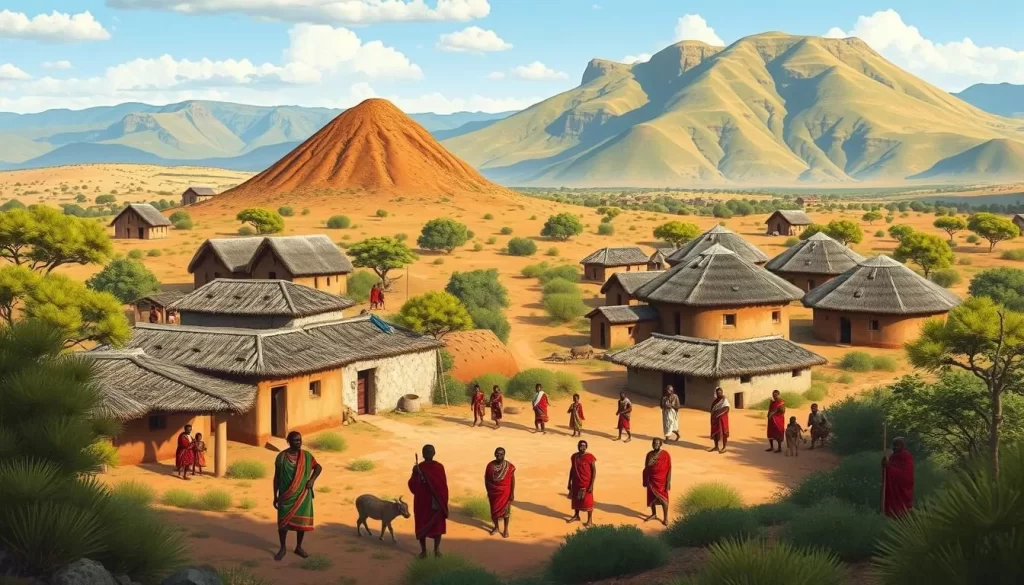
Immersing yourself in the rich cultural heritage of the Maasai people is a highlight of any visit to Masai Mara. The reserve, which covers about 370,000 acres in south-western Kenya, shares unfenced borders with numerous private conservancies administered by the Maasai.
Village Visits and Cultural Interactions
Visiting Maasai villages offers a unique opportunity to engage in meaningful cultural exchanges. You can witness traditional Maasai dances, learn about their customs, and understand their way of life. These interactions go beyond superficial performances, focusing on preserving cultural integrity and benefiting local communities.
Supporting Authentic Cultural Tourism
To support authentic cultural tourism, choose lodges and camps that have established fair partnerships with Maasai communities. Many private conservancies in the Mara represent successful models of community-based conservation, where Maasai landowners receive direct income from tourism. By engaging respectfully with Maasai culture and supporting community-based initiatives, you contribute to a sustainable model of tourism that preserves both cultural heritage and wildlife conservation in Masai Mara.
Top Accommodation Options in the Mara
When planning your Masai Mara adventure, choosing the right accommodation is crucial for a memorable experience. The Masai Mara offers a diverse range of accommodations to suit various budgets and preferences, ensuring that your safari experience is both comfortable and enjoyable.
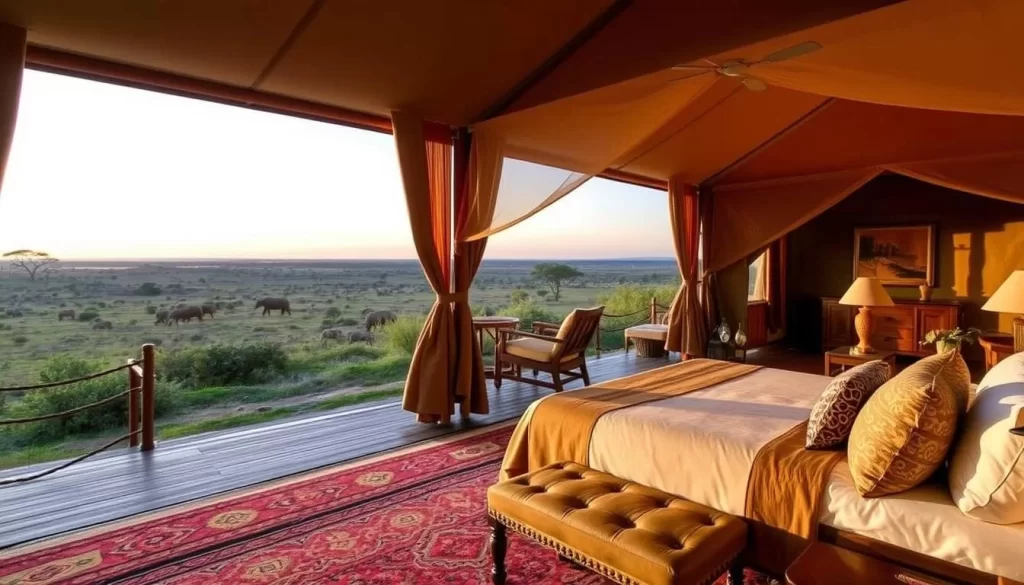
Luxury Tented Camps
For those seeking a luxurious safari experience, Masai Mara’s luxury tented camps offer high-end amenities and exceptional service. These camps provide spacious tents with en-suite bathrooms, fine dining, and guided game drives. Prices range from $900 to $1300 per person per night, depending on the season.
Mid-Range Lodges
Mid-range lodges in Masai Mara offer a balance between comfort and affordability. These lodges provide comfortable rooms, decent dining options, and guided safari tours. Prices for mid-range lodges fall between $300 and $750 per person per night. They often have easy access to the reserve for game drives.
Budget-Friendly Options
Budget-friendly camps and lodges are available for travelers on a tighter budget. These options offer basic amenities, including comfortable beds and clean facilities, and are often located just outside the reserve boundaries, providing easy access to the Masai Mara for daily game drives. Prices start from around $150-250 per person per night.
Masai Mara vs. Private Conservancies
Masai Mara offers two distinct ways to experience its wildlife: within the national reserve or in adjacent private conservancies. Both options provide unique experiences, catering to different preferences and expectations.
Benefits of Staying in the National Reserve
Staying within the Masai Mara National Reserve allows you to be at the heart of the action, with access to the reserve’s vast landscapes and abundant wildlife. The reserve is renowned for its annual wildebeest migration and high concentration of the Big Five. Game drives are a highlight, offering the chance to witness predators and prey in their natural habitat.
A key advantage of the national reserve is its established infrastructure and accessibility. However, during peak season, the reserve can become crowded, detracting from the exclusivity of your safari experience.
| Feature | National Reserve | Private Conservancies |
|---|---|---|
| Crowd Levels | Can be crowded during peak season | Generally less crowded |
| Activity Options | Limited to game drives | Includes night drives, walking safaris, and off-road driving |
| Conservation Impact | Supports conservation through entrance fees | Directly benefits local communities through tourism |
Advantages of Private Conservancies
Private conservancies surrounding Masai Mara offer a more exclusive safari experience, with strict limits on the number of vehicles and accommodations. This exclusivity, combined with the ability to conduct night drives and walking safaris, provides a more intimate connection with nature.
By choosing a private conservancy, you directly contribute to community-based conservation efforts, as many of these conservancies are owned and managed by local Maasai communities. The result is a more personalized and flexible safari experience, with opportunities to engage deeply with local culture and witness wildlife without the crowds.
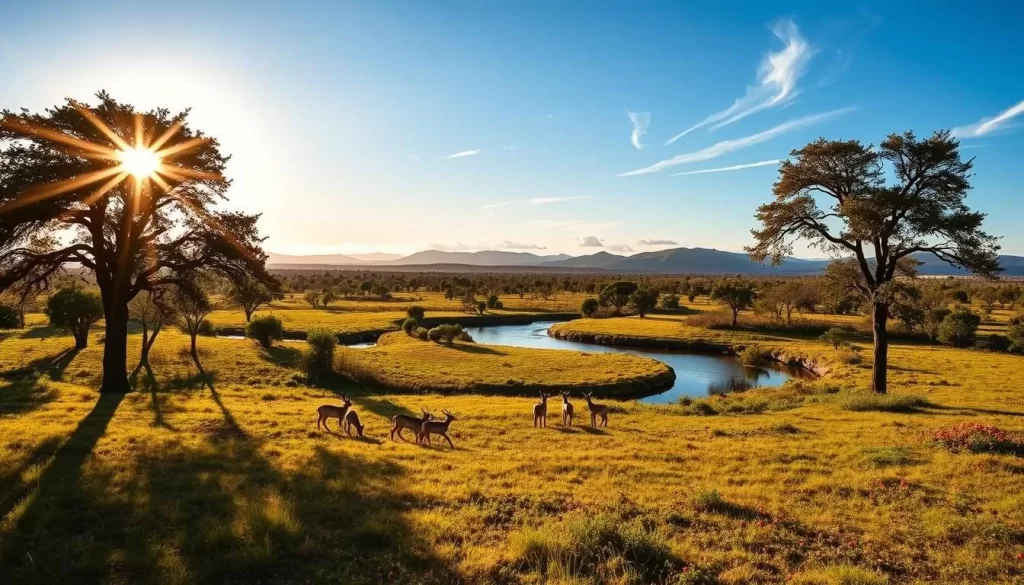
Planning Your Safari: Costs and Budgeting
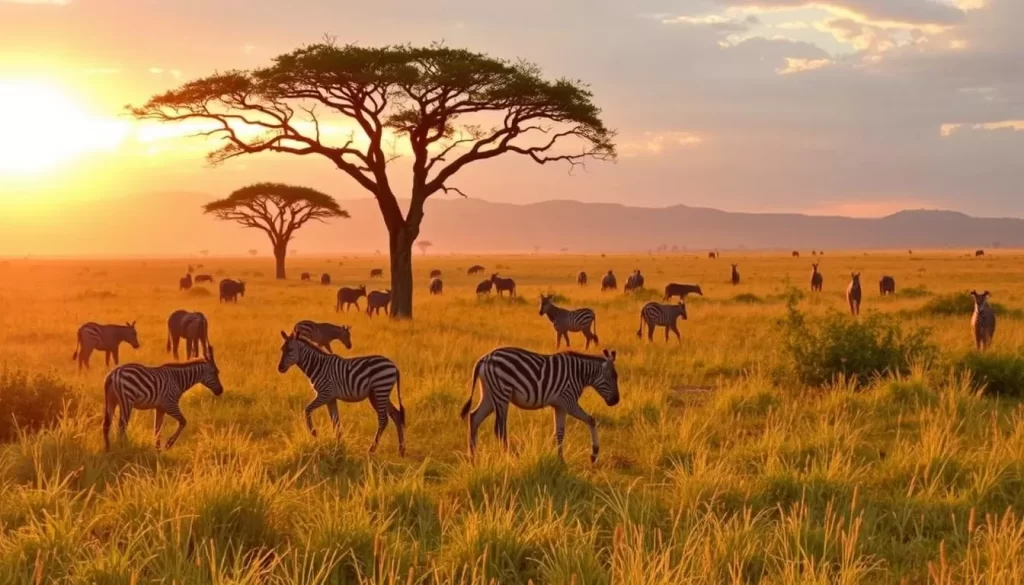
To make the most of your Masai Mara adventure, it’s essential to understand the costs involved. At Go2Africa, we tailor-make safaris that match your budget and personal travel wishes, creating bespoke journeys that cater to your individual needs.
What to Expect for Different Budget Levels
The cost of a Masai Mara safari can vary greatly depending on your budget level. Traveling during the green season (November-June) can save you 30-50% on accommodation rates while still offering excellent wildlife viewing. For those who can be flexible with their travel time, this can be a cost-effective option.
Tips for Getting the Best Value
To get the best value for your Masai Mara safari, consider the following tips:
– Book well in advance (9-12 months ahead) for peak season travel or look for last-minute special offers during shoulder and low seasons.
– Split your stay between the main reserve and a private conservancy to experience both environments while potentially saving on accommodation costs.
– Join a small group safari to significantly reduce costs compared to private arrangements.
By working with a reputable safari specialist, you can maximize your safari experience within your budget constraints, leveraging their established relationships with camps and knowledge of seasonal specials.
Getting to and Around the Masai Mara
Your journey to Masai Mara can be as exciting as the safari experience, with choices that fit different budgets and time constraints. Planning your travel is the first step to an unforgettable adventure.
Flight Options from Nairobi
For those short on time, flying from Nairobi to Masai Mara is the quickest option. Several airlines operate daily flights, offering breathtaking views of the Kenyan landscape. Flight duration is approximately 1 hour, making it an ideal choice for those looking to maximize their safari time.
Here’s a comparison of flight options:
| Airline | Frequency | Approximate Cost |
|---|---|---|
| Safarilink | Daily | $150-$200 |
| Air Kenya | Daily | $120-$180 |
Road Transfers and Internal Transportation
For a more budget-friendly option, consider a road transfer from Nairobi. The journey covers approximately 270 kilometers and takes around 5-6 hours, depending on road conditions. You’ll travel through scenic landscapes, including the Great Rift Valley, with stops at panoramic viewpoints. Once in Masai Mara, game drives are conducted in specialized 4×4 safari vehicles, ensuring optimal wildlife viewing.
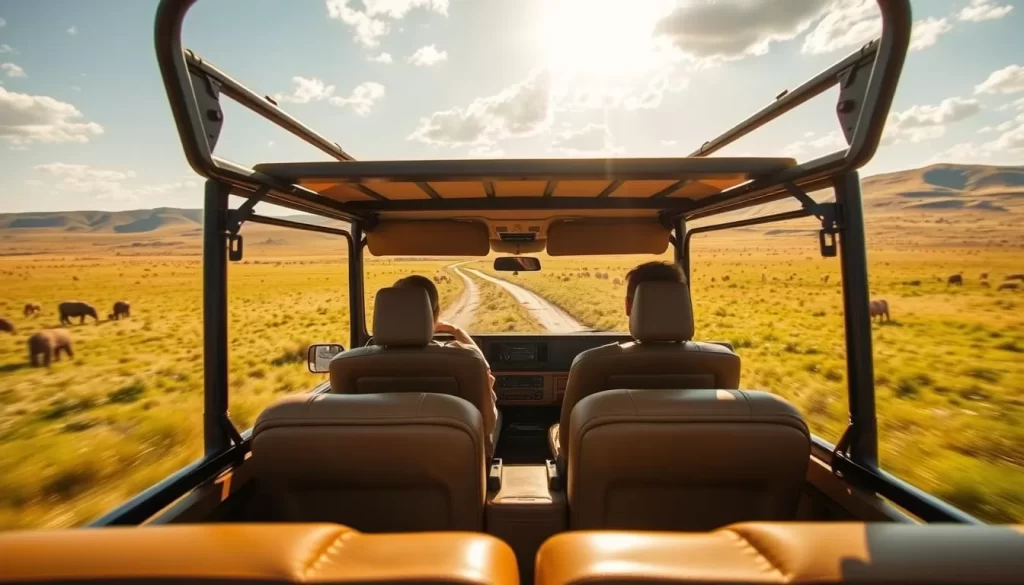
Health and Safety on Safari
Embarking on a safari adventure in Masai Mara requires careful consideration of your health and safety. Ensuring you’re prepared medically and aware of safety protocols will significantly enhance your experience.
Medical Preparations and Vaccinations
Before heading into the wilds of Masai Mara, it’s essential to consult with your healthcare provider about necessary vaccinations and medications. Staying up-to-date on vaccinations such as yellow fever and malaria prophylaxis is crucial. Additionally, don’t forget to pack any personal medications and consider any health concerns that may be exacerbated by the safari environment.
Safety Tips While on Game Drives
During game drives, listen to your guide’s instructions at all times. They are trained professionals who understand the behavior of wildlife and can ensure your safety. Key safety practices include remaining seated in the vehicle unless instructed otherwise, keeping a safe distance from animals, and not feeding or attempting to attract wildlife. Always follow your guide’s advice to have a safe and enjoyable safari experience in Masai Mara.
Photography Tips for the Masai Mara
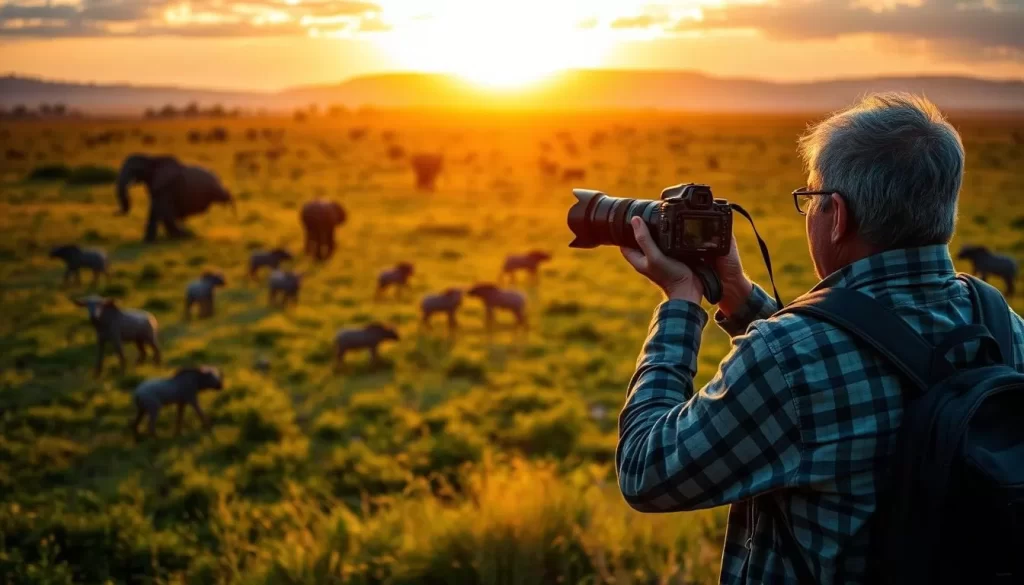
With its diverse wildlife and dramatic landscapes, Masai Mara National Reserve is a photographer’s paradise, offering endless opportunities to capture stunning images. The reserve’s varied environments, from grasslands to riverine forests, host a wide range of subjects, from the Big Five to smaller, fascinating creatures.
Essential Camera Gear
To capture the beauty of Masai Mara’s wildlife, you’ll need the right equipment. A digital SLR or mirrorless camera with a telephoto lens (at least 200mm) is essential for getting close-up shots without disturbing your subjects. Don’t forget a sturdy tripod or monopod to stabilize your camera, especially during early morning or late afternoon when light can be low.
Capturing the Perfect Wildlife Shot
The key to great wildlife photography is patience and understanding of your subjects. The golden hours just after sunrise and before sunset provide the most flattering light, enhancing colors and creating dramatic shadows. Observing animal behavior helps you anticipate and capture special moments, such as hunts or interactions between species. Communicating with your guide can also help position your vehicle for optimal lighting and composition while maintaining safe distances.
Tips for Great Shots: Focus on capturing animals in their natural habitat to tell a more complete story about life in Masai Mara. Don’t overlook smaller subjects like birds in flight, insects, or the interactions between different species, as these can make for compelling images.
Combining Masai Mara with Other Destinations
With Nairobi as a major transport hub, combining Masai Mara with other East African destinations is easier than you think. This strategic location allows you to effortlessly extend your safari experience to other remarkable places in the region.
Kenya’s Other Wildlife Hotspots
While Masai Mara is a highlight, Kenya has more to offer. You can visit other wildlife hotspots within the country, although the brief doesn’t specify them. Kenya’s diverse landscapes support a wide range of wildlife, making it an ideal destination for nature lovers and adventure seekers.
- Explore Kenya’s other national parks and reserves.
- Discover the unique flora and fauna of different regions.
Beach Extensions and Cross-Border Options
After the excitement of your Masai Mara safari, you can unwind on Kenya’s pristine coastline. Diani Beach offers powdery white sands and turquoise waters, perfect for relaxation. Alternatively, consider the Lamu Archipelago for a barefoot luxury experience ideal for honeymooners.
| Destination | Why Visit |
|---|---|
| Diani Beach | Popular family resorts, Exclusive beach lodges |
| Lamu Archipelago | Reef scuba diving and snorkelling, Barefoot luxury experience |
| Serengeti | Follow the Great Migration across borders |
| Zanzibar Island | Historic Stone Town, Spice tours, Pristine beaches |
For a more extensive travel experience, you can combine Masai Mara with Tanzania’s Serengeti or visit Zanzibar Island for beach activities. More adventurous travelers might consider gorilla trekking in Rwanda or Uganda, easily accessible through Nairobi.
Responsible Tourism in the Masai Mara
The Masai Mara National Reserve is not just a destination; it’s a thriving ecosystem that requires responsible tourism practices. The reserve, covering about 370,000 acres, shares unfenced borders with private conservancies administered by the Maasai.
Environmental Conservation Efforts
The private conservancy model in the Masai Mara is a prime example of community-based conservation. By supporting lodges and camps that employ local staff and contribute to community projects, you maximize your positive impact.
Organizations like the Koiyaki Guiding School, which trains local Maasai youth as professional safari guides, are creating sustainable career paths within the tourism industry.
Supporting Local Communities
You can further support local communities by respecting cultural protocols during village visits and purchasing crafts directly from artisans. This approach contributes to a tourism model that benefits both people and wildlife.
By choosing to engage with authentic community projects, you gain a deeper understanding of the challenges and successes of Maasai communities in a private conservancy setting.
Conclusion: Making the Most of Your Masai Mara Adventure
The Masai Mara National Reserve in Kenya is a gem that offers an unparalleled safari experience, rich in wildlife and cultural heritage. As you embark on this adventure, you’ll have the opportunity to witness the Great Migration, one of the most spectacular wildlife events on the planet.
To maximize your experience, it’s essential to plan your visit thoughtfully, considering the seasonal advantages and choosing accommodations that match your interests and budget. The Masai Mara offers exceptional wildlife viewing year-round, with each season providing its own unique advantages and photographic opportunities.
Take your time to disconnect from digital distractions during your safari, allowing yourself to be fully present in the moment. Whether you’re witnessing your first lion on the hunt or watching the sunrise over the savannah from a hot air balloon, the Masai Mara creates memories that will stay with you long after your journey ends, making your travel experience truly unforgettable.
The above is subject to change.
Check back often to TRAVEL.COM for the latest travel tips and deals.
